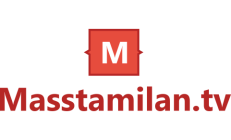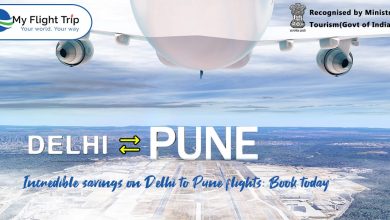The Significance of On-Page SEO in 2023: An Detailed Guide

Search algorithms can change instantly in the rapidly evolving realm of Search Engine Optimization (SEO). This means that once highly effective techniques may no longer hold the same relevance today.
The era of relying solely on link-building and off-page SEO as the most potent SEO strategies have ended. The importance of on-page SEO is re-emerging as a critical factor for search engine ranking. While both off-page SEO and on-page SEO have always been fundamental, there has been a shift towards emphasizing on-page SEO.
Understanding the Importance of On-Page SEO
In the past, acquiring backlinks was the primary focus. Backlinks were considered king, and marketers pursued them through article writing or purchasing. Today, having a well-optimized website for your targeted keywords is crucial. This involves incorporating site maps, meta descriptions, title tags, alt tags, image tags, and more.
Consider this: SEO drives over 1,000% more traffic than organic social media. As a marketer, it’s imperative to grasp the significance of on-page SEO. Its impact must be balanced.
As Google’s search capabilities become increasingly intelligent, the algorithm is shifting its focus away from backlinks and on-page elements. This doesn’t mean that keyword stuffing is making a comeback. Instead, search engine crawlers reward websites with clean structures and high user engagement.
According to Search Engine Journal, here are some key areas of focus for SEO in 2023:
- Using SEO insights to gain business intelligence across the organization.
- Implementing technical SEO best practices ensures websites deliver expected experiences and automates research and site fixes whenever possible.
- Finding a balance between SEO and PPC (Pay-Per-Click) and exploring synergies to adapt to market changes and Google updates.
In preparation for these changes, prioritizing the importance of on-page SEO is vital to generating organic traffic for your website.
Content Optimisation
Incorporating tactics that reflect the significance of on-page SEO is essential to a successful digital marketing strategy. It involves optimizing individual web pages to achieve higher search engine rankings and drive organic traffic to your website. By implementing effective on-page SEO techniques, you can enhance the visibility and relevance of your content, making it easier for your target audience to discover you online.
Keywords
SEO keywords play a crucial role but should never be used excessively. Keyword stuffing is no longer effective and can make your content appear spammy. Instead, focus on using relevant SEO keywords that accurately describe your page’s content and match your target audience’s search intent.
For example, if your website sells dog food, you might include keywords like:
- Buy dog food
- Order dog food
- Dog food Singapore
- Puppy food Singapore
While considering the search intent, avoid randomly scattering keywords throughout your content. Place your target keyword within the first 100-150 words to give your content the best chance of ranking higher. Search engines tend to pay more attention to keywords used early in the content.
Search engines also analyze how frequently a keyword or similar phrases appear on a page. Using the example of a search query for “java programming,” using the keyword just once may not convince search bots that your content is relevant. However, using keywords strategically can help increase their effectiveness. Avoid overstuffing and use keywords wisely.
Use keyword research tools like SEMrush, Ahrefs, and Keyword Finder to identify popular keywords. If you need help figuring out where to start, Google Trends can provide insights into current search trends.
Headings
Search engines appreciate well-structured content that utilizes headings effectively. Be sure to use H1 and H2 headers throughout your content, as they help search engine bots understand the structure of your page. Avoid presenting walls of text, as it diminishes the potential benefits you can gain.
Headings also improve the user experience by making it easier for readers to navigate your content. Consider how you would want a piece of content to flow and add value to the reader’s experience during content creation.
Internal and External Linking
Always include internal links within your content. Search engine bots can better understand your page’s topic through relevant internal links. Additionally, your website’s internal linking structure plays a significant role in how crawlers interpret the relationships between your pages.
In addition to internal links, pages rank higher when they have external links to authoritative websites. From a user perspective, external links provide additional relevant information for decision-making. Build relationships with high-quality sites by commenting on their articles, sharing their content, and guest posting on their blogs. However, avoid excessive external linking as it can dilute the link juice of your page.
Broken links are detrimental to search engine rankings. Regularly check your backlinks and fix any broken ones. Tools like Ahrefs can help you identify broken links.
Backlinks are signals of a website’s authority and relevance in Google’s algorithm. Websites with more backlinks are more likely to be viewed as reliable and trustworthy sources of information. As a result, Google tends to rank websites with more backlinks higher in search results. Higher rankings lead to increased organic traffic from Google.
URLs
Ensure your URLs are short, authentic-looking, and contain your target keyword. Generally, aim for URLs with no more than five terms.
In terms of SEO, avoid using underscores or special characters in your URLs, as they can hinder user and search engine navigation on your website.
Popular content management systems (CMS) like WordPress or Shopify often provide user-friendly interfaces for editing URLs. If you’re using WordPress, you can use plugins that simplify the creation of URL templates.
Images
play a significant role in SEO. They help search engines understand the content of your page and add visual elements to your content. Optimize your images by considering their size, resolution, and file type.
When uploading images from your computer, save them in JPG format, as it is the best image format for SEO purposes. Avoid using PNG images whenever possible, as they tend to have larger file sizes.
Use image alt tags and provide clear descriptions for your images. Search bots use alt text to understand the content and relevance of images to your page. Ensure that alt tags make sense within the context of your content.
Original images are preferred over stock photos as they provide a unique and valuable user experience. Google emphasizes helpful and original content, meaning images showing firsthand experience with a product or topic can be highly beneficial.
Videos
Videos are highly engaging and easy to consume, making them valuable for SEO. Aim to upload videos that are between 2-5 minutes long. Avoid including excessive text in your videos, as text tends to be less engaging for users.
Align your videos with important portions of your page to ensure that users see your key content while signalling the relevance of your content to search engines.
Videos also help decrease bounce rates due to their high engagement potential.
Title Tags
Title tags are one of the most crucial on-page SEO factors, if not the most important. They provide search engines with an overview of your page’s content. Including your target keywords in the title tag can improve your rankings further.
According to Ahrefs, Google is 57% more likely to rewrite title tags that are too long. If Google rewrites your title tags, it may result in a title not optimized for your target keywords or accurately reflects your page’s content. This can lead to decreased click-through rates as users may need help finding a new title as compelling or relevant to their search query. It’s
important to reassess your on-page SEO strategy to ensure that your titles are optimized for search engines and user experience.
You can incorporate modifiers within the title tag to target long-tail keywords.
Meta Descriptions
Meta descriptions also play a crucial role. Craft a unique one that includes your target keywords instead of letting the CMS generate your meta description. Implementing target keywords in your meta descriptions helps your content stand out to users and search engine bots.
Optimizing for Mobile Mobile
SEO is increasingly essential in on-page SEO, as most internet users access the web through their smartphones. By 2025, it’s projected that 72.6% of internet users will solely access the web via smartphones. Failing to optimize your website for mobile devices can result in missing out on significant traffic and potential customers.
Optimizing for mobile involves designing your website to be easily navigable and readable on smaller screens. Implement responsive design to ensure a seamless user experience across devices. Optimize loading times to prevent user frustration caused by slow page speeds.
Mobile SEO also entails optimizing for local search, as many users search for businesses and services while on the go. Ensure your business information, such as address, phone number, and hours of operation, is easily accessible and accurate in local search directories and on your website.
Optimizing for Click-Through Rates (CTR)
While optimizing your on-page elements is crucial, ensuring that users click through to your page is equally important. Here are some tips for improving CTR:
Use question-based title tags:
Approximately 8% of search queries are in the form of questions. Crafting title tags as questions can increase CTR, as users often search for specific answers. Position your content as the answer to the question, providing value to users.
Include the current year:
Incorporating the current year in your title and description keeps your content up-to-date and relevant to the audience, encouraging clicks.
Utilize keywords:
Use the keywords in your meta description to make your page relevant to users and search engines. Strategic placement of key phrases helps signal relevance.
Include an offer in your meta description:
Offers are enticing to users as they provide immediate value. Incorporate offers in your meta description to encourage clicks and visits to your page.
Optimizing for User Experience
Consider the overall user experience when optimizing your content. Dwell time, bounce rate, and other metrics are taken into account by search engines. By providing a positive user experience, you improve your chances of success.
Deliver relevant content promptly:
Online experiences often start with a search engine. When users click on your content, they expect immediate answers. Avoid unnecessary pleasantries and dive straight into providing what they’re looking for. Focus on your content rather than overwhelming it with excessive images.
Improve page loading speed:
Internet users need more patience. The speed at which your page loads impacts user experience. If it’s too slow, users are likely to close the tab. Use core web vitals metrics, such as First Contentful Paint (FCP) and Largest Contentful Paint (LCP), to assess loading times and improve them. Regularly analyze your website’s performance using tools like Google Search Console.
Include a sitemap:
A sitemap is a list of pages on your website, providing URLs and last edit dates. It helps search engines understand page relationships, content freshness, and categorization. Create a sitemap manually or use tools like Screaming Frog to guide search engine crawlers and prioritize page indexing. Additionally, consider using extensions like author, video, and image sitemaps to provide additional information about your content.
Optimize your content:
Content optimization is the final step in the optimization process. Ensure that your content is being crawled and indexed correctly. Focus on optimizing popular pieces of content first, as they have the most potential impact. Refreshing older but still visible articles can instantly surge organic traffic.
Understanding the Significance of On-Paconten
Final Words
To stay ahead in search engine rankings, it’s crucial to adapt to the ever-changing criteria of search engines. One way to achieve this goal is to recognize the growing importance of on-page SEO. If you need assistance understanding and implementing on-page optimization for your website, you can contact the best SEO services agency in Singapore, Seocompany.me. SEO experts provide free consultations and can guide you in growing your website and increasing traffic.





